Gamers to the fun, toad to perdition: ASUS G20CB
Gaming PCs are a great clearing for productive experiments. Designers who are not constrained by the rigid ATX formats of the standard sometimes invent very interesting sketches, while skilled engineers with the help of modern elemental base manage to bring drawings and mockups to production samples. Piece works of talented modders will always be beyond competition, but they exist in one copy, and it is expensive to buy: either the price is too heavy, the distance is great, and sometimes the creator does not want to part with his brainchild. With the product delivered on the conveyor, the situation is simpler: at least thousands of copies, different configurations, the price is more or less adequate.
One of these non-standard gaming computers ASUS G20CB:

Above - a promotional picture, in the harsh reality of the device looks like this:
')
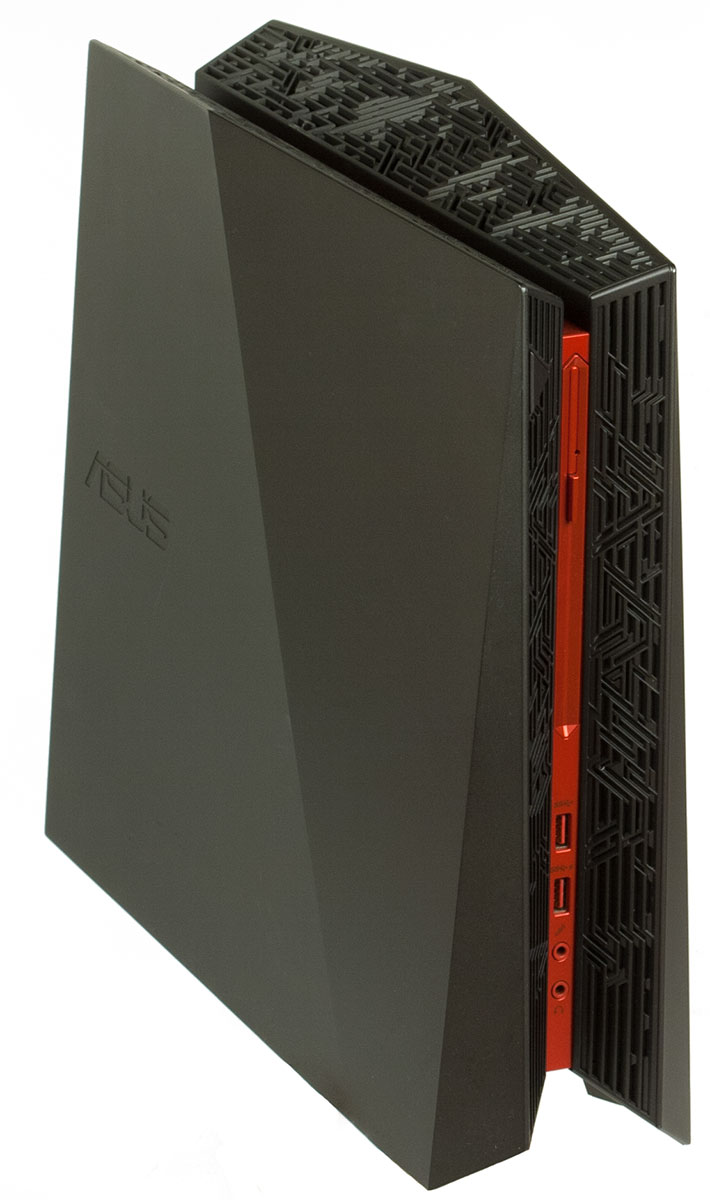



The G20 is more like a modern office SFF, only the back panel of a dual-slot video card and an indecently large power adapter provide the gaming vein:

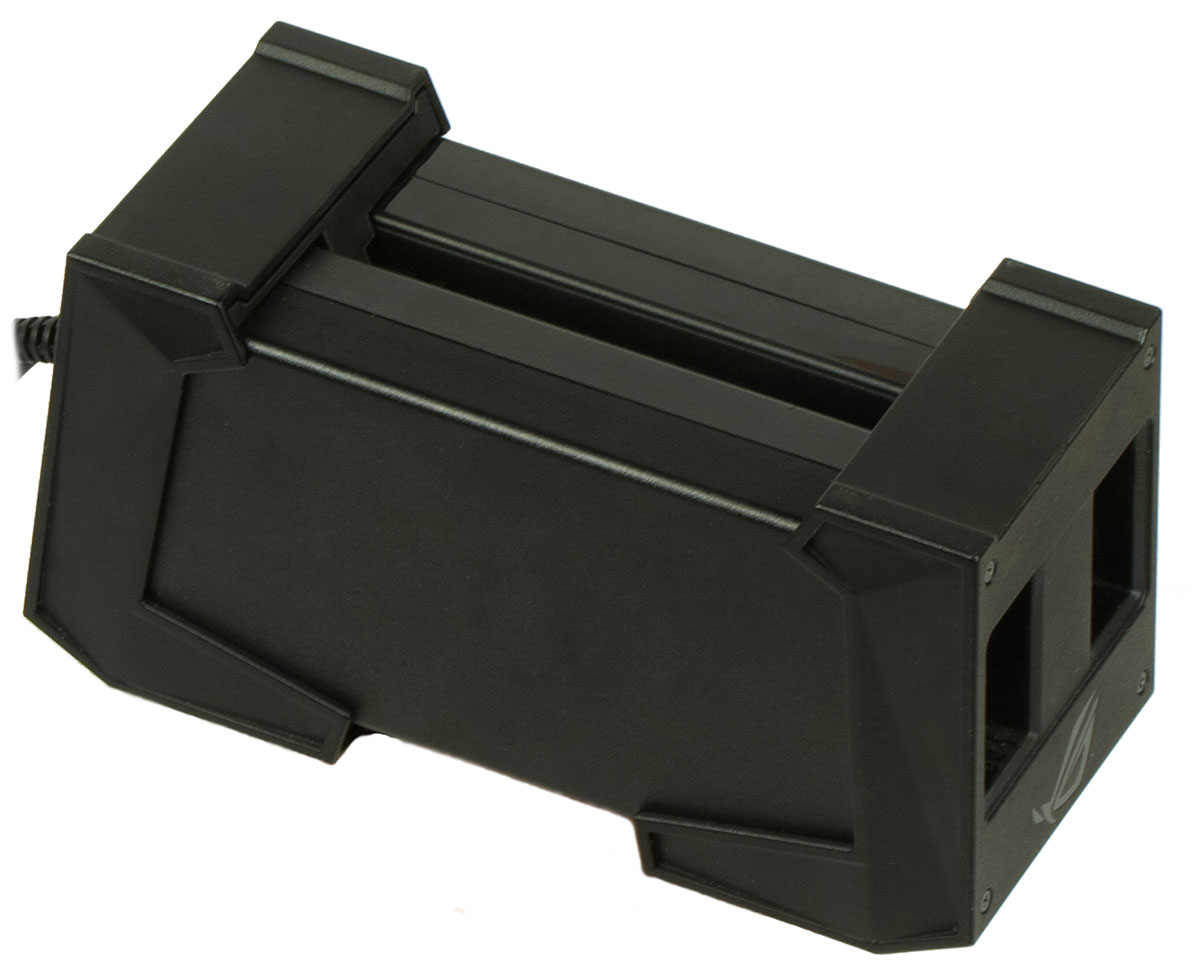
It should be mentioned separately. To reduce the internal volume of the case, ASUS decided to make the unit external, but it considered it was unnecessary to throw strength at its assembly. Instead, the load was distributed between a pair of standard 230 and 180 watt adapters. One feeds the motherboard, the processor and all drives, the second feeds the video card.

A good solution in terms of versatility and pricing (it’s always cheaper to take the ready than to develop your own from scratch), but it takes up such a composite design two sockets instead of one. But nothing prevents to replace the supplied cord with a self-made Y-shaped one.
But back to the look of the G20. Technological air vents are hidden behind beautifully stamped plastic grids:


In the above photo - exhaust cooling system. Air is taken from the bottom and sides through the same grilles. There are LED RGB-lights:


Unfortunately, the experience in handling the camera does not allow to convey all the static beauty of the picture - in life everything looks much more beautiful. It is possible to dynamically change the color and intensity of the glow through the corporate application:

The front panel has USB connectors and jacks (3.5 mm TRS), as well as an optical drive that is almost imperceptible at first glance:

On the back of the case from the motherboard, there are 2xUSB 2.0, 2xUSB 3.0, 2xUSB 3.1, a wired network, six audio jacks (3.5 mm TRS) and a pair of power sockets. A discrete graphics card has three DisplayPort, one HDMI and one DVI.

Two USBs occupy a branded mouse and keyboard attached to the G20, for a total of six USB remain for connecting peripherals and drives; for the gaming station is more than enough. It is noteworthy that you can also use the video core built into the central processor. It is unlikely that on a gaming computer with a powerful video card in the PCI-Ex16 HDMI slot, the output on the motherboard will be used, but the fact of its presence is pleasant.
Under the two-color plastic is hidden the usual iron box:

Without the skill of disassembling such devices, it will take a lot of time to search for fastening screws, and then just as much to determine the right direction of force application (the side cover sits tight). At first glance it becomes clear that the body is well thought out: the parts are fastened together in several places, the fixing is entirely screw. Something similar was in the recently reviewed MSI Nightblade MI, but the mounting density is slightly less.
Double side cover: plastic mounted on a steel base. There is a decent gap between metal and plastic, cold air is supplied through it to the three blovers responsible for the ventilation of the internal space.

Red detail - a sliding sticker with the name of the model and serial:

It is noteworthy that all three centrifugal turbines work on blowing. Two, located in the upper part of the case, pump air through the processor radiator:

Heat is transferred to the radiator through two heat pipes with a diameter of 8 mm.

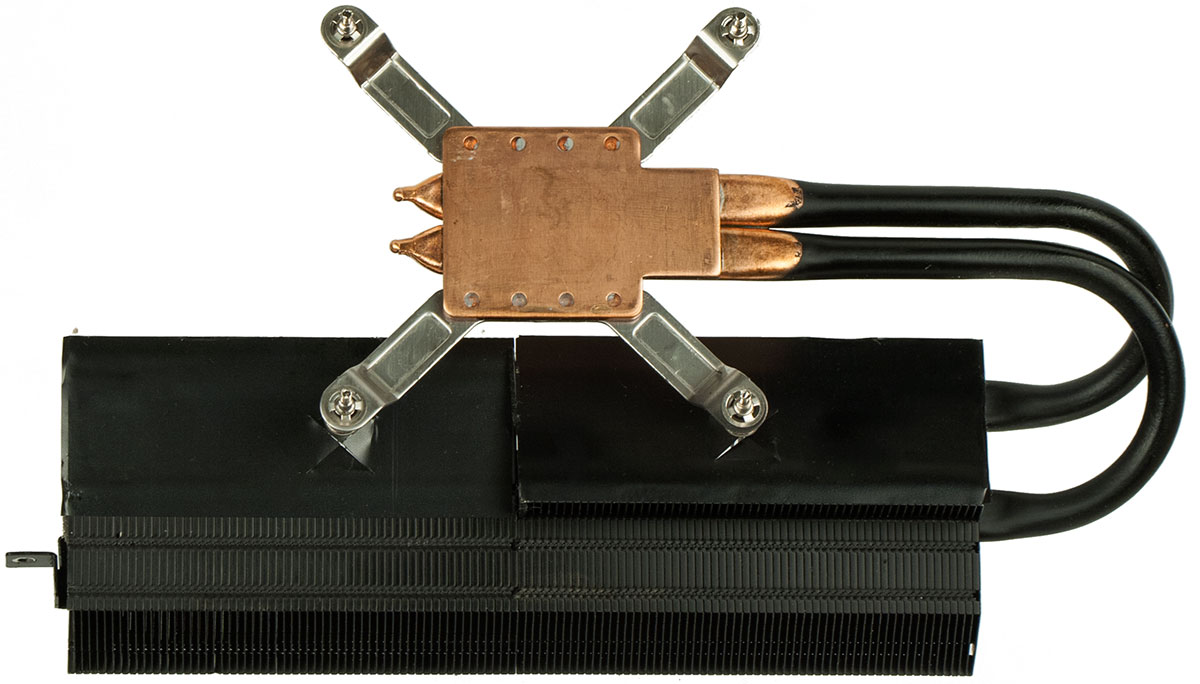
It is installed simply and conveniently, on six screws: four press the heat sink to the processor, two fasten the radiator to the case.

You will have to remove the radiator not only to replace the processor or apply a new thermal paste, but also to increase the amount of RAM - the heat pipes block access to the modules (two SO-DIMM modules of 8 GB each).

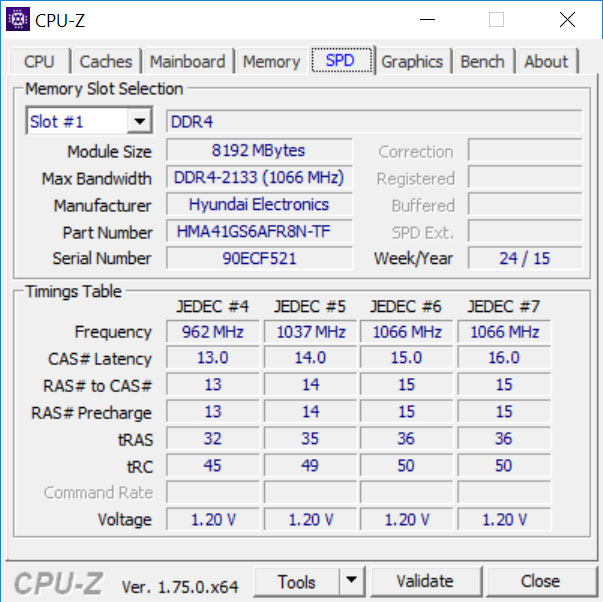
This is one of the few moments in the G20, which can be attributed to the minuses of the small displacement of the hull.
The video card is a full-size GTX 980, connected to the PCI-Ex16 slot on the motherboard via a corner adapter.


It is dismantled together with the steel bracket and the back panel part with one hand movement:
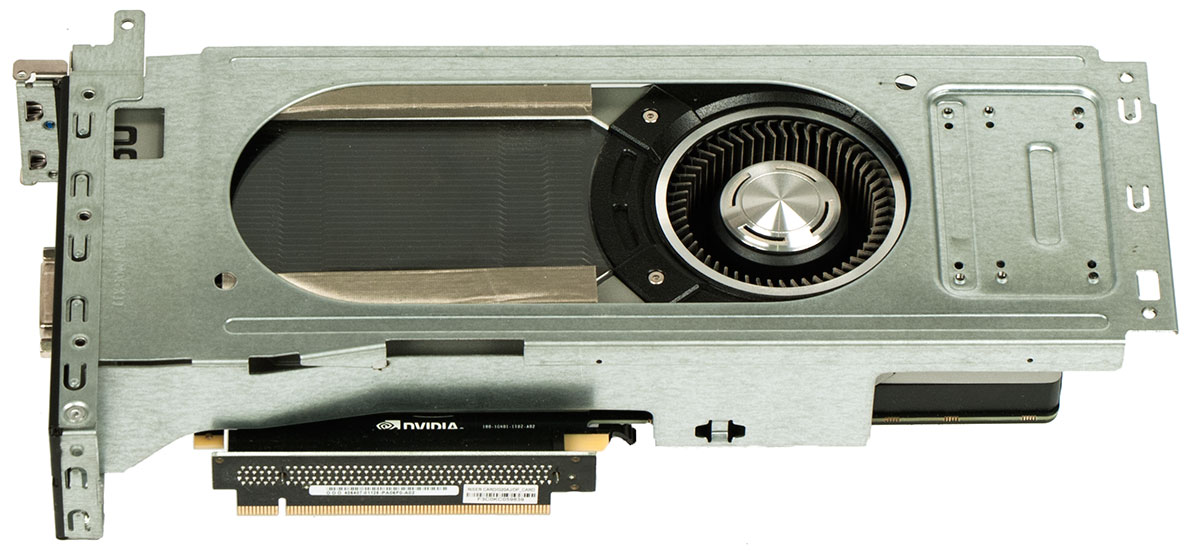

A logical and simple solution that allows you to move away from the standard, very inconvenient in a compact package, algorithm “pierced the connectors into the slot - inserted into the slot - clamped with a screw” without processing components. The adapter is made of extruded steel, fastened in the housing with four screws.

I had previously encountered solutions that were similar in simplicity and convenience only in server solutions and industrial computers; for some reason, they did not “reach” a simple user.
Power is supplied to all drives by converters scattered across the board. For the most powerful consumers - video cards and processors - cables are used (in order not to load a printed circuit board with power printed conductors).


In the last photo, next to the six-pin power connector of the processor, you can clearly see the 802.11AC network adapter installed in the miniPCI-E slot. Next to it is a 256 GB solid-state drive in slot M.2.

The second drive - a Toshiba 3.5 ”terabyte is clearly visible in general terms (with a dismantled video card).

The length of the SATA cables inside the G20 is less than 60 mm, since the signal connector is located in close proximity to the drive and the optical drive. The latter, as it is not difficult to guess, is a “notebook” form factor.

It is installed in a removable basket.

In the configuration that came to the review, the processor is Core i7-6700, the top-end Skylake-S for desktop PCs:
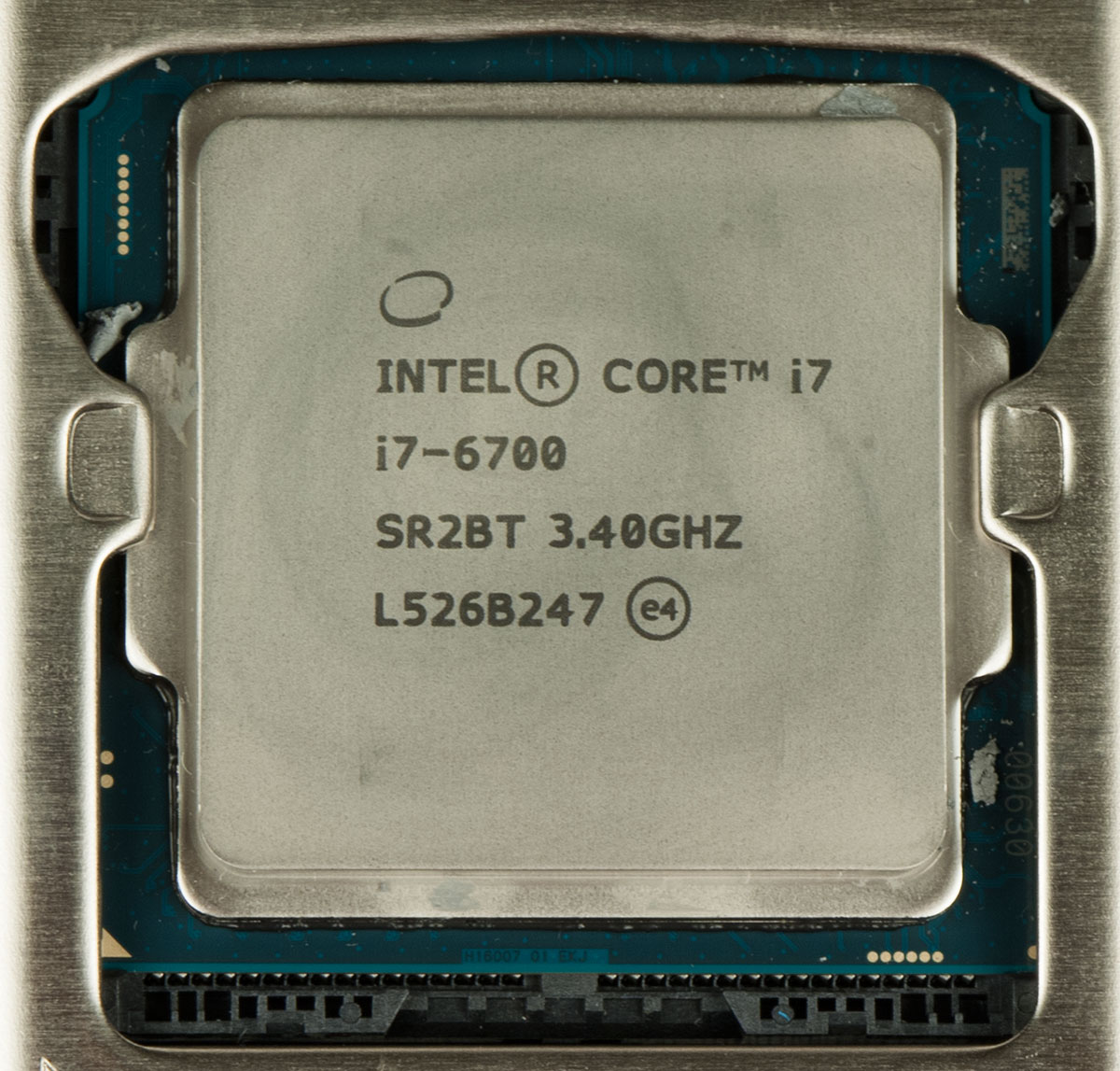
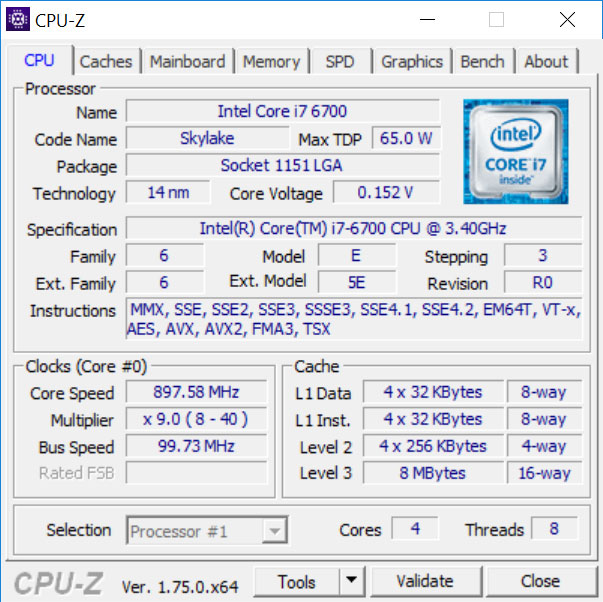
There are no radiators installed on the power converter around the processor, and the proprietary DIGI + is not visible. In general, identifying a ASUS product in the motherboard is possible only by the characteristic font and logo of the manufacturer. There is no abundance of proprietary technologies inherent in the gaming motherboard series.

As a result, the BIOS has relatively few overclocking options. But the general presentation is traditional for ASUS:

Everything that is in the Advanced section relates to the basic settings of the system and integrated controllers.

The Monitor section is also filled with standard “gauges”, since Q-Fan has remained.

However, the standard configuration of the speed regulator of the processor fan responds adequately to heating, I did not see temperatures above 81 degrees. The maximum was reached when running LinX at 40 minutes.
In the “Tool” section, besides the branded flash driver EZ Flash 2 Utility, there is an SPD Information.

Its meaning is in the title. It shows detailed information about the operation of memory modules taken from the SPD chip.

Very useful software in case there is no program like CPU-Z or OS is not installed, but it is expensive to climb into the case.
Firmware for Windows is accompanied by software APP Box, which is a kind of guide.

The Asus Command section concentrates utilities of the “service” assignment: backup, restore, security, power management, and others.

In the "Performance" section are collected utilities and multimedia applications:
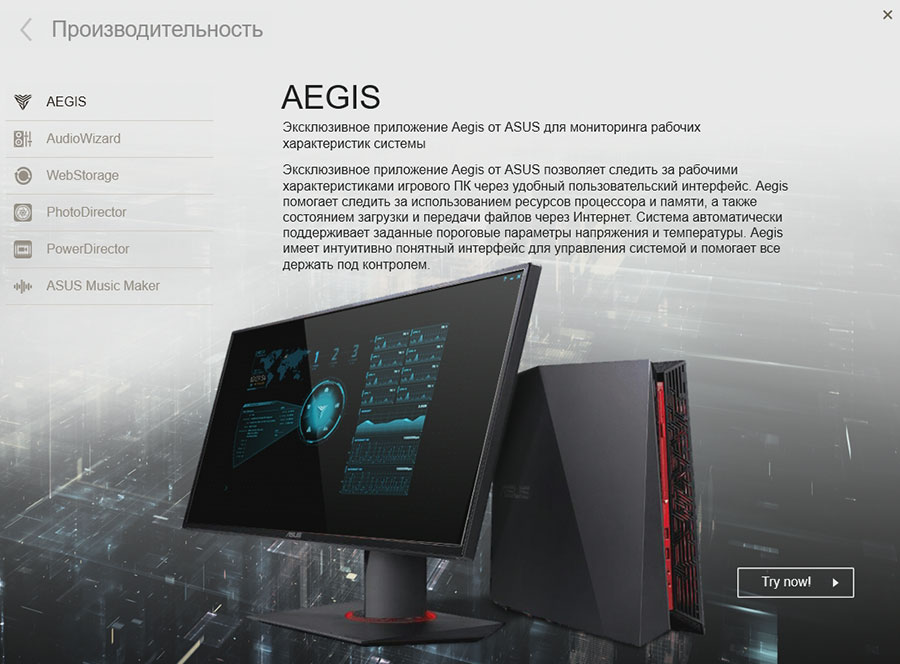
In the “entertainment” section there are small games that a user can entertain while waiting for the installation of heavier games (GTA V, for example).
You can only dwell on some of them, since most programs are extremely simple to use, and their purpose is reflected in the titles.
AEGIS is a superstructure above the desktop, a sort of extended gadget panel. At the first start, their number is small:

You can add the backlight applet already mentioned at the beginning of the article to this set ...

... World map showing time ...

... Hotkeys Configurator ...

... and something else.
ASUS Power Manager - advanced power mode configurator.

Audio Wizard allows you to customize the profiles of corporate sound, add effects and other things for comfortable immersion in acoustic nirvana.

System Information provides a basic set of system information. Not much.
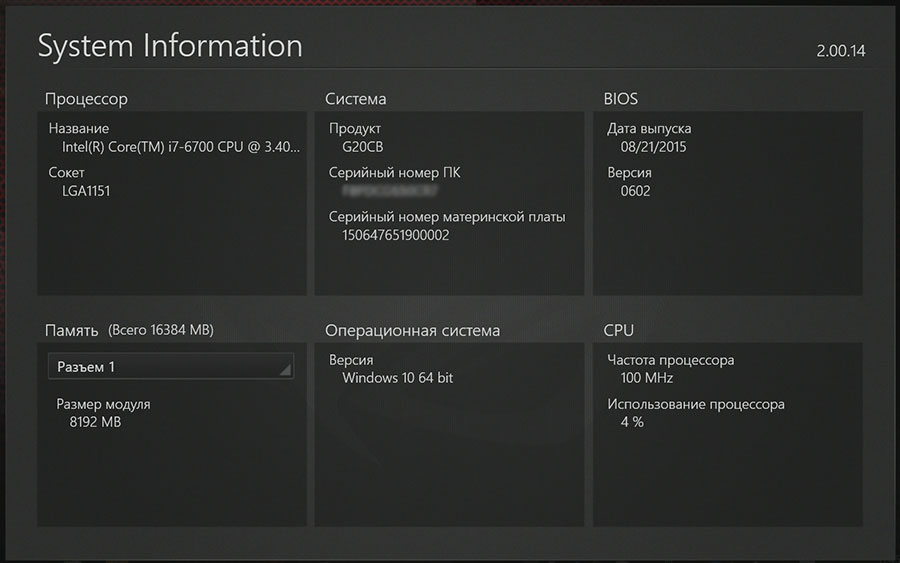
Full basic information is collected in the table:
There are six performance tests: four games and two basic presets in 3D Mark. Permission for games FullHD, maximum detail, NVIDIA proprietary technologies included, anti-aliasing and anisotropic filtering of the highest possible level in an application.
The numbers speak for themselves: modern games are excellent, there is almost no noise, and even if the G20 is installed a meter away from the user, it won't annoy the fans.
In summary, the G20CB is a great gaming computer. Compact, relatively easy to upgrade, quiet in operation. The configuration considered in the article will suit most gamers with a FullHD monitor (or slightly higher, 2560 x 1440). With some reservations it is possible to launch games in 4K resolution. Like all high-quality products, the disadvantage is the price: 200,000 rubles for the top configuration.
We have a simpler model on sale - ASUS G20AJ , which costs half as much as the top one.
PS The G20 comes with a wired keyboard and mouse, very practical in practice. Especially the keyboard: a long stroke of the buttons, the classic layout.


Thank you for your attention and have a great weekend!
One of these non-standard gaming computers ASUS G20CB:

Above - a promotional picture, in the harsh reality of the device looks like this:
')




The G20 is more like a modern office SFF, only the back panel of a dual-slot video card and an indecently large power adapter provide the gaming vein:


It should be mentioned separately. To reduce the internal volume of the case, ASUS decided to make the unit external, but it considered it was unnecessary to throw strength at its assembly. Instead, the load was distributed between a pair of standard 230 and 180 watt adapters. One feeds the motherboard, the processor and all drives, the second feeds the video card.

A good solution in terms of versatility and pricing (it’s always cheaper to take the ready than to develop your own from scratch), but it takes up such a composite design two sockets instead of one. But nothing prevents to replace the supplied cord with a self-made Y-shaped one.
But back to the look of the G20. Technological air vents are hidden behind beautifully stamped plastic grids:


In the above photo - exhaust cooling system. Air is taken from the bottom and sides through the same grilles. There are LED RGB-lights:


Unfortunately, the experience in handling the camera does not allow to convey all the static beauty of the picture - in life everything looks much more beautiful. It is possible to dynamically change the color and intensity of the glow through the corporate application:

The front panel has USB connectors and jacks (3.5 mm TRS), as well as an optical drive that is almost imperceptible at first glance:

On the back of the case from the motherboard, there are 2xUSB 2.0, 2xUSB 3.0, 2xUSB 3.1, a wired network, six audio jacks (3.5 mm TRS) and a pair of power sockets. A discrete graphics card has three DisplayPort, one HDMI and one DVI.

Two USBs occupy a branded mouse and keyboard attached to the G20, for a total of six USB remain for connecting peripherals and drives; for the gaming station is more than enough. It is noteworthy that you can also use the video core built into the central processor. It is unlikely that on a gaming computer with a powerful video card in the PCI-Ex16 HDMI slot, the output on the motherboard will be used, but the fact of its presence is pleasant.
Under the two-color plastic is hidden the usual iron box:

Without the skill of disassembling such devices, it will take a lot of time to search for fastening screws, and then just as much to determine the right direction of force application (the side cover sits tight). At first glance it becomes clear that the body is well thought out: the parts are fastened together in several places, the fixing is entirely screw. Something similar was in the recently reviewed MSI Nightblade MI, but the mounting density is slightly less.
Double side cover: plastic mounted on a steel base. There is a decent gap between metal and plastic, cold air is supplied through it to the three blovers responsible for the ventilation of the internal space.

Red detail - a sliding sticker with the name of the model and serial:

It is noteworthy that all three centrifugal turbines work on blowing. Two, located in the upper part of the case, pump air through the processor radiator:

Heat is transferred to the radiator through two heat pipes with a diameter of 8 mm.


It is installed simply and conveniently, on six screws: four press the heat sink to the processor, two fasten the radiator to the case.

You will have to remove the radiator not only to replace the processor or apply a new thermal paste, but also to increase the amount of RAM - the heat pipes block access to the modules (two SO-DIMM modules of 8 GB each).


This is one of the few moments in the G20, which can be attributed to the minuses of the small displacement of the hull.
The video card is a full-size GTX 980, connected to the PCI-Ex16 slot on the motherboard via a corner adapter.


It is dismantled together with the steel bracket and the back panel part with one hand movement:


A logical and simple solution that allows you to move away from the standard, very inconvenient in a compact package, algorithm “pierced the connectors into the slot - inserted into the slot - clamped with a screw” without processing components. The adapter is made of extruded steel, fastened in the housing with four screws.

I had previously encountered solutions that were similar in simplicity and convenience only in server solutions and industrial computers; for some reason, they did not “reach” a simple user.
Power is supplied to all drives by converters scattered across the board. For the most powerful consumers - video cards and processors - cables are used (in order not to load a printed circuit board with power printed conductors).


In the last photo, next to the six-pin power connector of the processor, you can clearly see the 802.11AC network adapter installed in the miniPCI-E slot. Next to it is a 256 GB solid-state drive in slot M.2.

The second drive - a Toshiba 3.5 ”terabyte is clearly visible in general terms (with a dismantled video card).

The length of the SATA cables inside the G20 is less than 60 mm, since the signal connector is located in close proximity to the drive and the optical drive. The latter, as it is not difficult to guess, is a “notebook” form factor.

It is installed in a removable basket.

In the configuration that came to the review, the processor is Core i7-6700, the top-end Skylake-S for desktop PCs:


There are no radiators installed on the power converter around the processor, and the proprietary DIGI + is not visible. In general, identifying a ASUS product in the motherboard is possible only by the characteristic font and logo of the manufacturer. There is no abundance of proprietary technologies inherent in the gaming motherboard series.

As a result, the BIOS has relatively few overclocking options. But the general presentation is traditional for ASUS:

Everything that is in the Advanced section relates to the basic settings of the system and integrated controllers.

The Monitor section is also filled with standard “gauges”, since Q-Fan has remained.

However, the standard configuration of the speed regulator of the processor fan responds adequately to heating, I did not see temperatures above 81 degrees. The maximum was reached when running LinX at 40 minutes.
In the “Tool” section, besides the branded flash driver EZ Flash 2 Utility, there is an SPD Information.

Its meaning is in the title. It shows detailed information about the operation of memory modules taken from the SPD chip.

Very useful software in case there is no program like CPU-Z or OS is not installed, but it is expensive to climb into the case.
Firmware for Windows is accompanied by software APP Box, which is a kind of guide.

The Asus Command section concentrates utilities of the “service” assignment: backup, restore, security, power management, and others.

In the "Performance" section are collected utilities and multimedia applications:

In the “entertainment” section there are small games that a user can entertain while waiting for the installation of heavier games (GTA V, for example).
You can only dwell on some of them, since most programs are extremely simple to use, and their purpose is reflected in the titles.
AEGIS is a superstructure above the desktop, a sort of extended gadget panel. At the first start, their number is small:

You can add the backlight applet already mentioned at the beginning of the article to this set ...

... World map showing time ...

... Hotkeys Configurator ...

... and something else.
ASUS Power Manager - advanced power mode configurator.

Audio Wizard allows you to customize the profiles of corporate sound, add effects and other things for comfortable immersion in acoustic nirvana.

System Information provides a basic set of system information. Not much.

Full basic information is collected in the table:
| CPU | Intel Core i7-6700 |
| RAM | 16 GB DDR4-2133 |
| Video card | GeForce GTX 980 |
| System drive | Samsung MZHPV256HDGL 256 GB |
| Additional drive | HDD Toshiba DT01ACA100 1TB |
| Wired network | 1 Gbps Intel I219V |
| Wireless network | Wi-Fi 802.11ac (Realtek 8821AE) |
| Optical drive | MATSHITA Blu-ray Combo Drive |
| Bluetooth | V 4.0 |
| Connectors | 2x USB 3.1, 4x USB 3.0, 2x USB 2.0, HDMI, RJ45 LAN, 6x miniJack 3.5 mm TRS |
| Dimensions | 358 x 340 x 104 mm |
| Weight | 6.38 kg |
| Power Supply | 180 + 230W |
There are six performance tests: four games and two basic presets in 3D Mark. Permission for games FullHD, maximum detail, NVIDIA proprietary technologies included, anti-aliasing and anisotropic filtering of the highest possible level in an application.
| FireStrike Extreme | 5,764 |
| Firestrike | 10,983 |
| GTA V, avg fps | 57 |
| Call of duty black ops 3 ,, avg fps | 88 |
| FarCry 4, avg fps | 54 |
| Dying Light, avg fps | 69 |
The numbers speak for themselves: modern games are excellent, there is almost no noise, and even if the G20 is installed a meter away from the user, it won't annoy the fans.
In summary, the G20CB is a great gaming computer. Compact, relatively easy to upgrade, quiet in operation. The configuration considered in the article will suit most gamers with a FullHD monitor (or slightly higher, 2560 x 1440). With some reservations it is possible to launch games in 4K resolution. Like all high-quality products, the disadvantage is the price: 200,000 rubles for the top configuration.
We have a simpler model on sale - ASUS G20AJ , which costs half as much as the top one.
PS The G20 comes with a wired keyboard and mouse, very practical in practice. Especially the keyboard: a long stroke of the buttons, the classic layout.


Thank you for your attention and have a great weekend!

Source: https://habr.com/ru/post/393679/
All Articles